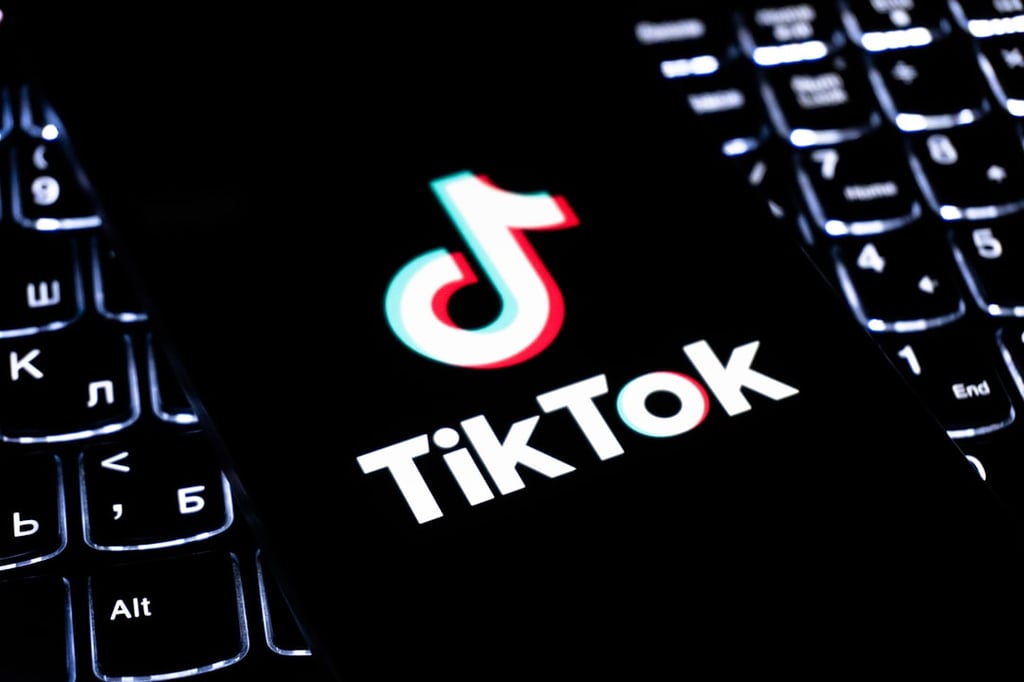The gadgetsphere is gabbing excitedly about two unknown touch tablet products: one from Microsoft and the other from Apple.
At first glance, these two products appear to be categorically similar. In fact, they’re different from each other in just about every important way.
Some Microsoft fans say that finally Microsoft is getting into the game, and can start rolling back Apple’s dominance of the tablet market.
Unfortunately, this isn’t going to happen any time soon.
While Microsoft’s Surface with Windows RT tablet may eventually become a runaway success, I’m predicting that unit sales of the iPad Mini will be at least ten times higher during its first six months on the market (not including other iPad models — just the Mini) than sales of the Microsoft Surface with Windows RT during its first six months.
Here’s why.
Price
The cheapest Microsoft Surface with Windows RT will be about the same as the cheapest current iPad: $499 will get you 32GB of internal storage and no keyboard cover.
If you do want the keyboard cover, it will set you back another $100, and with both cover and double the storage an extra $200.
When you consider materials, components, manufacturing economies of scale and other factors, this pricing is very aggressive from Microsoft’s perspective. It’s got a quad core Tegra 3 CPU and 2GB of RAM, two cameras, two microphones, a regular USB port, a microSDXC card slot, HD video out, Bluetooth 4.0 and WiFi.
While Apple makes huge profits on every iPad, Microsoft may be close to breaking even on Surface tablets in the short term — or possibly even losing money.
So this is an aggressive price when you consider the cost of the stuff it’s made of. Unfortunately, consumers don’t consider that. They will look out over the tablet landscape and see vastly cheaper tablets running Android, and far better known and supported iPads for the same price.
The tiny new iPad will cost half the price. I know, they’re not comparable as devices. But they are comparable as holiday gifts — people may consider buying one or the other for their spouse, kids, grandparents or whatever. And at $250, the iPad Mini is in the sweet-spot gift zone.
Keyboard
Microsoft made the marketing decision to highlight the flexible keyboard cover as the main visual differentiator between the Surface and the iPad. When you think of a Surface device, you think of the optional cover. When you think of an iPad, you imagine a tablet without a keyboard or cover.
The Microsoft Surface keyboard is probably nothing special, and is probably going to suck.
Very flat keyboards built into flexible or semi-flexible rubber skins have been around for two decades. Just look at how many there are available now. They generally don’t sell very well, because the usability of zero- or very low-key travel keyboards is terrible.
Even flat keyboards built into tablet covers have been something of a banality for two years.
Microsoft all but admitted the fact when the company’s President of Windows and Windows Live Steven Sinofsky told reporters that “it typically takes a few days for users to get used to typing on the Touch Cover, but when they do, they can expect a typing experience that is almost as good as typing on a keyboard with moving keys.”
My current belief is that the best keyboard you’ll be able to use with the Surface will mostly likely be Apple’s standard Bluetooth keyboard — the same one I’ve been using with iPads for two years.
No, it’s not built into the case. But I think most people prefer them separate. The best experience for using a keyboard with a touch tablet involves a case that props up the tablet, and a wireless, separate keyboard that gives you not only a vastly superior typing experience but also the freedom to place and angle your tablet how you like it.
As I’ve pointed out, the keyboard comparison is technically a non-issue. Any tablet can use any Bluetooth keyboard, and the Surface keyboard cover is optional.
But in the world of marketing and perception, the assumed and highlighted benefit of a so-called revolutionary keyboard cover will turn into a liability as users try it, hate it and complain about it.
Apps
It’s possible that Surface with Windows RT, which can’t run Windows applications, will one day have enough apps to make it a compelling platform but not within the first six months of its existence.
Meanwhile, the iPad Mini will offer more than a quarter of a million apps the day it ships.
Aftermarket
Because of Apple’s stellar unit shipment numbers and big-spending customer base, hundreds of companies support Apple tablets with creative, off-the-wall and fun aftermarket devices including not just cases, but all kinds of unexpected iPad-specific products.
This enormous after-market will exist for the iPad Mini, just as it does for the current iPad. The Surface? Not so much. It’s a real disadvantage.
Maturity
When Apple launched the first iPad in 2010, it was one of the most impressive first-version launches of any consumer electronics product ever. In addition, it had the advantage of being the only product of its kind on the market for months. It was literally incomparable because there was nothing to compare it to.
Microsoft may ship a great tablet on the first try, too. But even if they do as well as Apple did, they’re shipping into a saturated market where expectations have been rising for performance and functionality for more than two years.
The biggest possible concern is lag time for the multi-touch interface. Apple’s ability to provide relatively little lag-time when you, say, swipe your finger across the screen to move from one set of icons to the next is the single biggest advantage it had over Android devices. It’s the “magical” that Jobs talked about, where your brain accepts the illusion of physical reality.
Laggy, jaggy performance for touch interfaces shatters that illusion, and turns off users.
To the best of my knowledge, Apple is the only tablet maker that has been able to ship non-laggy multi-touch performance in its version-1 tablet. So it’s unlikely that Microsoft will be able to.
Any poor interface performance by the Surface will tar the product with a bad reputation which could take years to overcome after actual performance has been improved.
Reputation
One of the un-measurables surrounding Microsoft’s many attempts to crack the mobile consumer electronics market is that the Microsoft brand is not associated in the minds of consumers with any particular temperature: As a company, Microsoft is neither “hot,” nor “cool.”
It’s almost bizarre that Microsoft has a reputation as a stodgy, corporate hawker of Excel and Exchange Server, when you consider the Xbox, Windows Phone and other appealing consumer products the company has been actually making for years.
Microsoft’s reputation isn’t fair, and it isn’t right, but mostly it isn’t irrelevant.
The fact is that Surface will very likely face the same prejudice, for lack of a better world, as Windows Phone handsets do. Some of these phones are innovative, powerful and really cool. But Microsoft and its Windows Phone partners just can’t match the reputation for hipster cool that the iPhone has or geek cred that Android handsets are associated with.
So Microsoft faces an uphill battle convincing the masses to pick Surface over iOS or Android devices.
Customers
And now we come to the least well-appreciated barrier to success that Microsoft faces: Its own fan base.
Yes, Microsoft has fanboys, and millions of them. But they love Microsoft in large part because the company promotes products that are the opposite of “information appliances.”
The post-PC world so far belongs to Apple, a company that ships environmentally unfriendly black boxes that the customer is not meant to modify, expand upon, optimize, customize or even understand.
So now Microsoft comes along with an appliance. Who’s going to buy it? Not Microsoft fanboys — they want anti-appliances. Not Apple fanboys. And not Android fanboys. Who’s left?
The Microsoft Surface RT and the iPad Mini are not comparable, really. The current iPad makes a better comparison.
But I compare them anyway because we’re in a situation where we have two essentially unknown tablets from two of the biggest companies in the industry.
And even before we’ve actually reviewed either of them, or tried them out in the real world, I still think we have enough information to predict that the iPad Mini will be an instant success. And the Microsoft Surface will be a short-term flop.
The good news for Microsoft is that they’re on the right track, and that the future could be altogether different.
But I’m pretty sure that a comparison of the first six months of each device will see unit sales of the Apple iPad Mini more than 10 times bigger than the Microsoft Surface.
-
Huawei’s AI Update: Things Are Moving Faster Than We Think
FEATURE | By Rob Enderle,
December 04, 2020
-
Keeping Machine Learning Algorithms Honest in the ‘Ethics-First’ Era
ARTIFICIAL INTELLIGENCE | By Guest Author,
November 18, 2020
-
Key Trends in Chatbots and RPA
FEATURE | By Guest Author,
November 10, 2020
-
Top 10 AIOps Companies
FEATURE | By Samuel Greengard,
November 05, 2020
-
What is Text Analysis?
ARTIFICIAL INTELLIGENCE | By Guest Author,
November 02, 2020
-
How Intel’s Work With Autonomous Cars Could Redefine General Purpose AI
ARTIFICIAL INTELLIGENCE | By Rob Enderle,
October 29, 2020
-
Dell Technologies World: Weaving Together Human And Machine Interaction For AI And Robotics
ARTIFICIAL INTELLIGENCE | By Rob Enderle,
October 23, 2020
-
The Super Moderator, or How IBM Project Debater Could Save Social Media
FEATURE | By Rob Enderle,
October 16, 2020
-
Top 10 Chatbot Platforms
FEATURE | By Cynthia Harvey,
October 07, 2020
-
Finding a Career Path in AI
ARTIFICIAL INTELLIGENCE | By Guest Author,
October 05, 2020
-
CIOs Discuss the Promise of AI and Data Science
FEATURE | By Guest Author,
September 25, 2020
-
Microsoft Is Building An AI Product That Could Predict The Future
FEATURE | By Rob Enderle,
September 25, 2020
-
Top 10 Machine Learning Companies 2020
FEATURE | By Cynthia Harvey,
September 22, 2020
-
NVIDIA and ARM: Massively Changing The AI Landscape
ARTIFICIAL INTELLIGENCE | By Rob Enderle,
September 18, 2020
-
Continuous Intelligence: Expert Discussion [Video and Podcast]
ARTIFICIAL INTELLIGENCE | By James Maguire,
September 14, 2020
-
Artificial Intelligence: Governance and Ethics [Video]
ARTIFICIAL INTELLIGENCE | By James Maguire,
September 13, 2020
-
IBM Watson At The US Open: Showcasing The Power Of A Mature Enterprise-Class AI
FEATURE | By Rob Enderle,
September 11, 2020
-
Artificial Intelligence: Perception vs. Reality
FEATURE | By James Maguire,
September 09, 2020
-
Anticipating The Coming Wave Of AI Enhanced PCs
FEATURE | By Rob Enderle,
September 05, 2020
-
The Critical Nature Of IBM’s NLP (Natural Language Processing) Effort
ARTIFICIAL INTELLIGENCE | By Rob Enderle,
August 14, 2020
SEE ALL
ARTICLES







